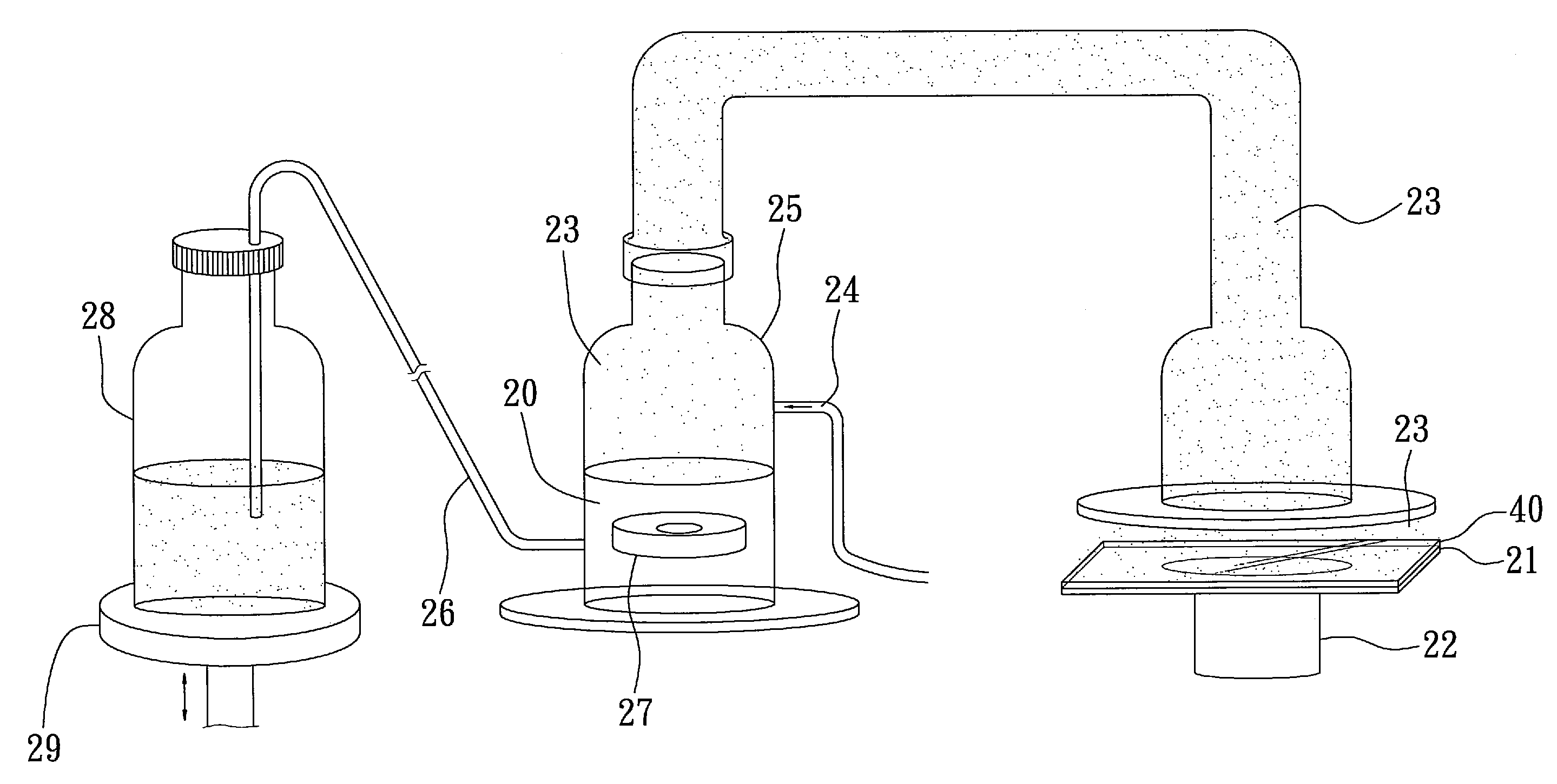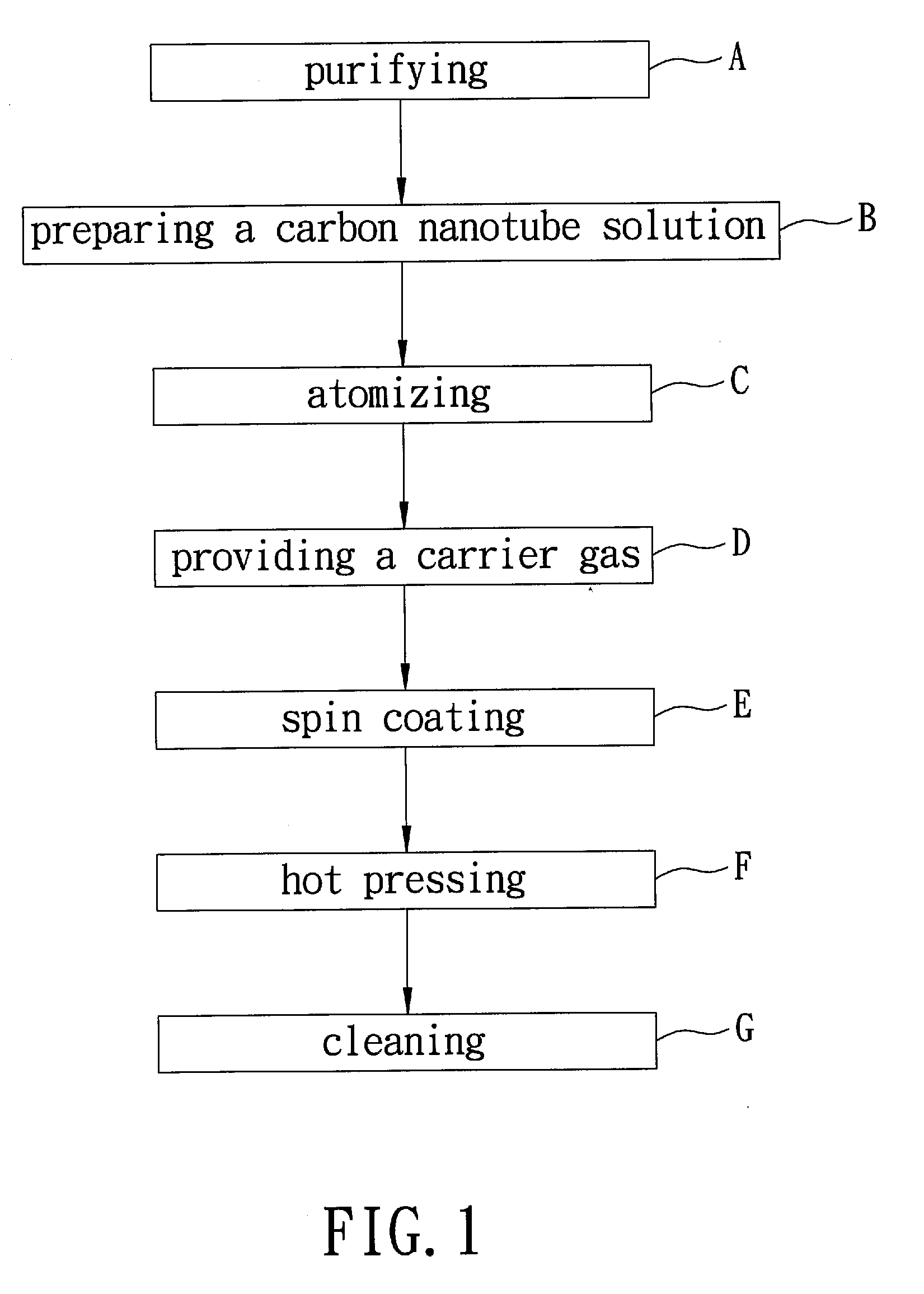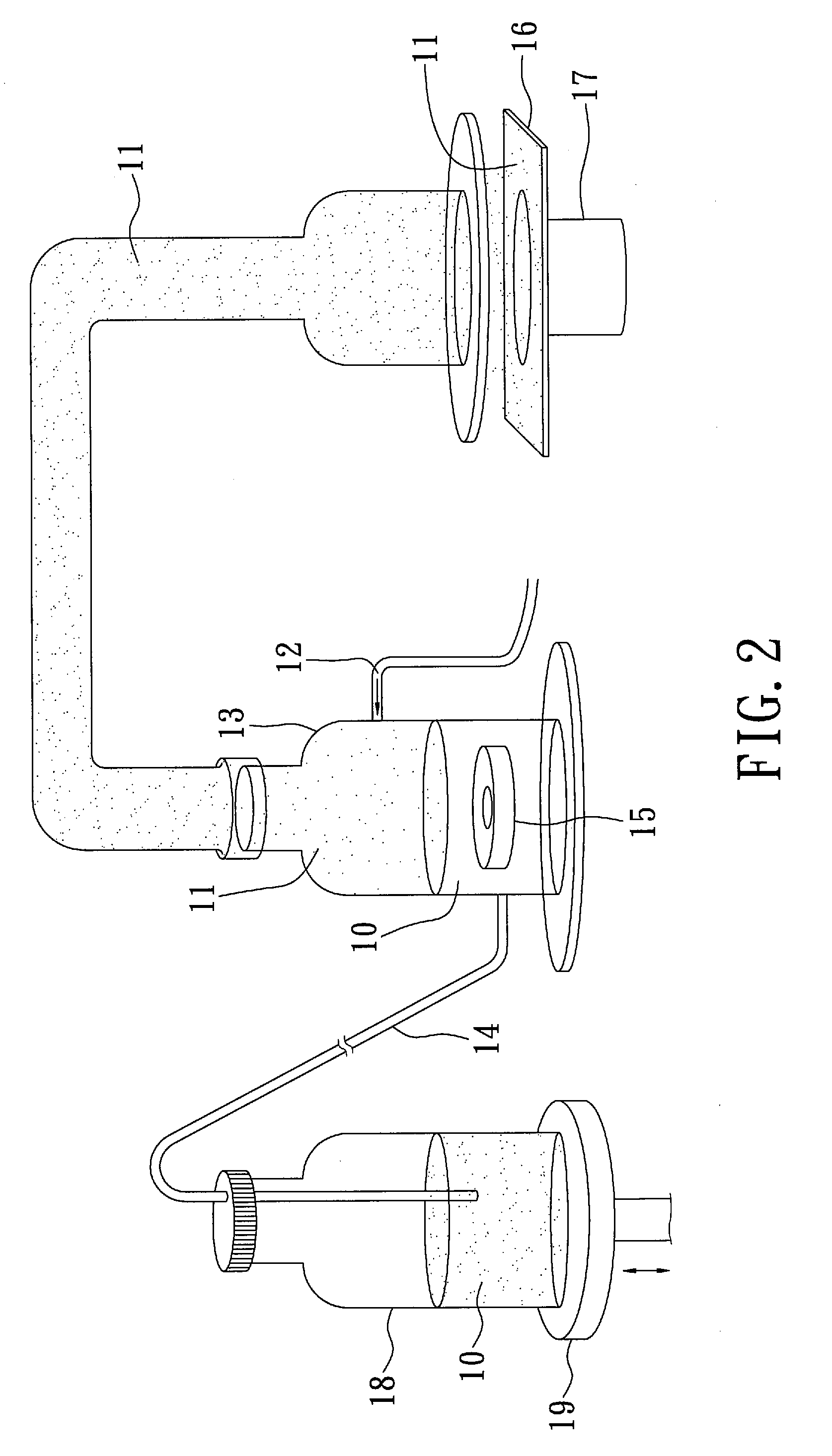Method for making a conductive film of carbon nanotubes
- Summary
- Abstract
- Description
- Claims
- Application Information
AI Technical Summary
Benefits of technology
Problems solved by technology
Method used
Image
Examples
example 1
[0050]A concentrated hydrochloric acid solution (250 ml, 6M) was added with 1 g of multi-walled carbon nanotubes (MWNTs), was stirred for 24 hours, and was washed with water following by precipitation for 6 times. The aforesaid procedure was repeated for 3 times with fresh hydrochloric acid solution (250 ml, 6M) and fresh water each time so as to purify the MWNTs. The purified MWNTs were vacuum dried at 80° C. for 12 hours and at 250° C. for 24 hours, and was then baked in a nitrogen-filled oven at 400° C.
[0051]10 mg of the purified MWNTs and 10 mg of sodium decyl sulfate were added into 1 L of deionized water to obtain a solution of the MWNTs. The solution of the MWNTs was acted by a probetypesonicator (SONICS® VCX750 supplied by Sonics & Materials, Inc.) having power of 750 W for 5 minutes at 20% of the power and then for 5 minutes at 39% of the power so as to prevent the aggregation of the MWNTs and to disperse the solution of the MWNTs homogeneously.
[0052]The solution of the MWN...
example 2
[0104]A solution of the MWNTs (10 mg / L) was prepared in a manner identical to that used in Example 1.
[0105]A substrate (4 cm×4 cm) disposed on a spin coating equipment was treated by (i) rinsing with deionized water at a spinning speed of 300 r.p.m. for 30 seconds and washing with deionized water at a spinning speed of 500 r.p.m. for 40 seconds; (ii) washing with ethanol at a spinning speed of 800 r.p.m. for 60 seconds and at a spinning speed of 1200 r.p.m. for 60 seconds; and (iii) drying at a spinning speed of 4000 r.p.m. The aforesaid procedures (i), (ii), and (iii) were repeated twice so as to clear the substrate.
[0106]A polyvinyl alcohol solution (500 mg / L, molecular weight=27000-32000) was prepared. Five drops of the polyvinyl alcohol solution were provide on the substrate. The substrate was first spun at 450 r.p.m. for 30-60 seconds for collecting the polyvinyl alcohol solution at the center of the substrate, was spun at 600 r.p.m. for 15-30 seconds for preliminarily spreadin...
example 3
[0108]The product of Example 2 was further processed using the aforesaid steps I′) and J′) to obtain a product in which another coating layer of polyvinyl alcohol is coated on top of the conductive film of carbon nanotubes. A scanning electron microscope image of the product is shown in FIG. 13.
Flexural Test:
[0109]A specimen of the product of Example 2 (referred as to a CNT / PVA / PET specimen) was subjected to the Flexural Test described hereinbefore and the result thereof was shown in Table 4. The test result of the CNT / PET specimen (i.e., a product made in Example 1) is also shown in Table 4. The sheet resistance of the CNT / PET specimen before bending is about 100 Ω / cm2 and the sheet resistance of the CNT / PVA / PET specimen before bending is about 150 Ω / cm2. The sheet resistance of the CNT / PET specimen after bending 50 times is about 3 Ω / cm2, and the sheet resistance of the CNT / PVA / PET specimen after bending 50 times is about 360 Ω / cm2. Table 4 shows the results for more than 50 times...
PUM
 Login to View More
Login to View More Abstract
Description
Claims
Application Information
 Login to View More
Login to View More - R&D
- Intellectual Property
- Life Sciences
- Materials
- Tech Scout
- Unparalleled Data Quality
- Higher Quality Content
- 60% Fewer Hallucinations
Browse by: Latest US Patents, China's latest patents, Technical Efficacy Thesaurus, Application Domain, Technology Topic, Popular Technical Reports.
© 2025 PatSnap. All rights reserved.Legal|Privacy policy|Modern Slavery Act Transparency Statement|Sitemap|About US| Contact US: help@patsnap.com



